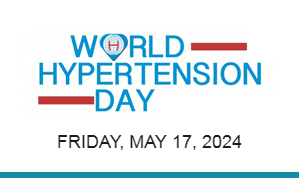20th European Meeting on Hypertensionj
Saturday, 19th June – Elderly hypertensive patients treated with olmesartan medoxomil demonstrated more favorable office blood pressure (BP) normalization rates and sustained 24-hour blood BP control compared with ramipril. Giuliano Tocci, MD, Sant’Andrea Hospital, Rome, Italy, presented findings from the Efficacy and Safety in Elderly Patients with Olmesartan versus Ramipril Treatment (ESPORT) trial at the European Society of Hypertension Annual Meeting in Oslo, Norway.
ESPORT was an international, multi-center, randomized, double-blind study that consisted of a 2-week wash-out period followed by 12 weeks of active treatment with either olmesartan 10-40 mg daily (n=170) or ramipril 2.5-10 mg daily (n=175) administered with a glass of water after breakfast between 9:00 AM and 11:00 AM. Dosage was determined based on office BP reading at 2 weeks and 6 weeks on medication with a target BP normalization of <140 mm Hg systolic BP (SBP) and <90 mm Hg diastolic BP (DBP) for nondiabetic patients and <130 mm Hg SBP and <80 mm Hg DBP for diabetic patients. All patients had mild to moderate essential arterial hypertension (defined as sitting DBP 90-109 mm Hg and SBP 140-179 mm Hg after two week hypertensive medication wash-out period with placebo) and were between the ages of 65 and 89 years old. The two groups were well-matched at baseline.
The primary efficacy endpoint was the rate of between-treatment BP normalization achievement at 12 weeks. The primary safety endpoint was the between-treatment incidence of adverse events and changes in laboratory or ECG data at 12 weeks. Secondary endpoints included between-treatment comparison of: percentage of DBP normalized patients after 2, 6, and 12 weeks, percentage of normalized plus responder patients after 2, 6, and 12 weeks, changes in sitting office pulse pressure after 12 weeks, changes in 24-hour daytime (6 AM – 10 PM) and night-time (10 PM – 6 AM) average SBP, DBP, and pulse pressure after 12 weeks, hourly averages of BP changes with treatment, BP changes in the last 4 hours of the dosing interval after 12 weeks, changes in office and ambulatory heart rate, and smoothness index of BP after 12 weeks.
After 12 weeks of treatment, more patients in the olmesartan group achieved SBP and DBP normalization than in the ramipril group (p<0.05). This was also true at Weeks 2 and 6. Additionally, patients taking olmesartan demonstrated larger reductions in average 24-hour SBP and DBP compared with ramipril (p<0.001 for both).
The number of patients reporting adverse events was comparable between the two groups. Fifteen patients withdrew from study participation due to adverse events (8 in the olmesartan group and 7 in the ramipril group). The majority (89%) of reported adverse events were categorized as mild or moderate. While three events met the serious adverse event criteria, they were not deemed drug-related.
Overall, olmesartan medoxomil was found to be effective and well-tolerated in elderly hypertensive patients. Patients taking olmesartan had more favorable rates of office BP normalization and sustained 24-hour BP control compared with ramipril. Adverse events associated with olmesartan were mainly mild or moderate in severity.





